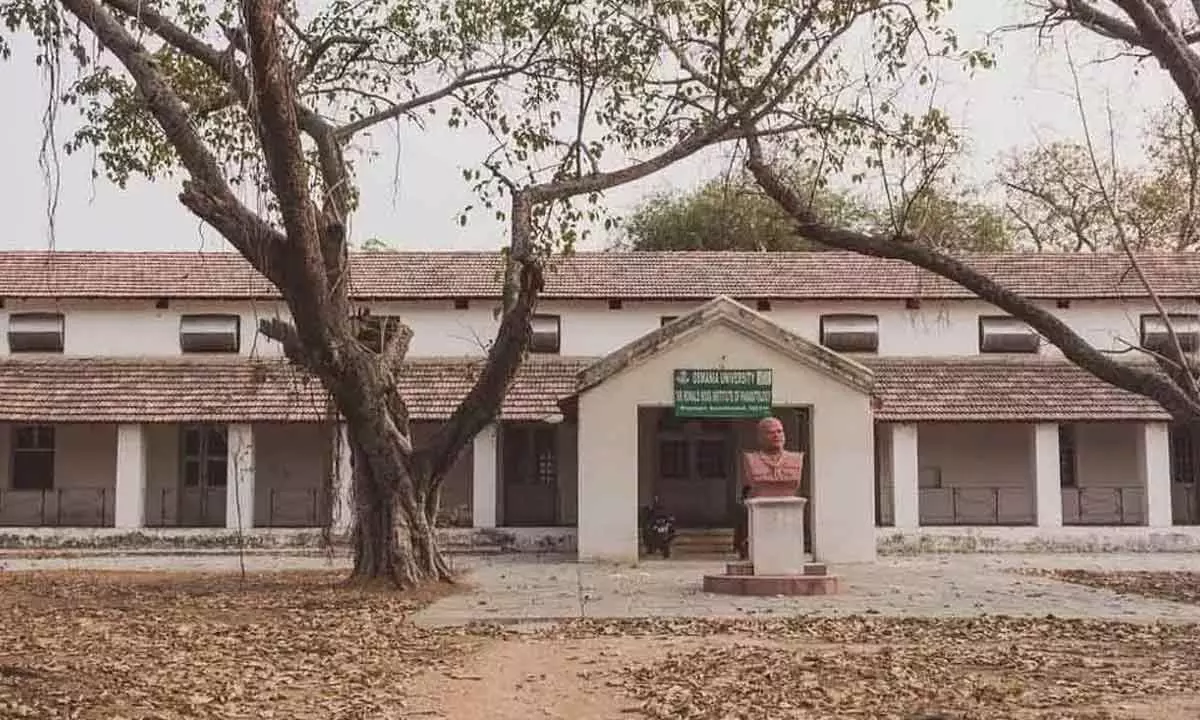Hyderabad: Sir Ronald Ross institute wallows in utter neglect

Sir Ronald Ross institute wallows in utter neglect
- This heritage building was constructed in 1895 and was then called Begumpet Military Hospital. The institute could have become a major tourist attraction but the long-drawn battle with the Airports Authority of India and Osmania University for possession of land has left the centre virtually isolated
- Sir Ronald Ross performed pioneering research on malaria in the heritage building where he discovered the cause and remedy for malaria in 1897, which won him the Nobel Prize in 1902. But now, the building lies deserted and neglected by the State government and other concerned authorities
Hyderabad: Sir Ronald Ross Institute of Parasitology located in Begumpet has been laid under utter neglect due to lack of funds by the State government. The building is a heritage structure and was declared a protected monument which lies in a pathetic condition today. Historians say, the structure dilapidated and started crumbling due to lack of concern by the State government to protect the monument.
The institute spread over 2.5 acres is now under the protection of Osmania University (OU), who acquired it from the then Deccan Airlines (Airports Authority of India) in 1955 and the Osmania University's Zoology department took over the building.
The institute is located just a few feet away from the Old Airport in Begumpet. Scores of Hyderabadis remain unaware that an important research which is recorded is annals of medical history, was taken up at the building located in Begumpet.
This heritage building was constructed in 1895 and was then called Begumpet Military Hospital. The institute could have become a major tourist attraction but the long-drawn battle with the Airports Authority of India and Osmania University for possession of land has left the centre virtually isolated.
According to historians, Sir Ronald Ross performed pioneering research on malaria in the heritage building where he discovered the cause and remedy for malaria in 1897, which won him the Nobel Prize in 1902. But now, the building lies deserted and neglected by the State government and other concerned authorities.
In 1955, Osmania University acquired the building and established a malarial research institute, but it was taken over by the Airports Authority of India. In 1975, OU again took control of the building and a lab was functioned till 1997. Thanks to the tussle between the university and the Airports Authority of India, all past efforts to get funds had proved futile.
Ch Veera Chary, president of Welltech Foundation said, "Several attempts made in the past to revive the institute have failed, leaving no land to develop the institute. The heritage institution must be protected by the government as it is one of the key structures for the heritage city which the State government claims," he added.
Veera Chary, said "I filed a public interest petition (PIL) in the Hyderabad High Court in August 2018 and urged the State government to hand over the institute to the Welltech Foundation for maintenance." The Welltech Foundation is involved in finding solutions to the health, economic and social problems caused by malaria.
He says, "Every citizen has the right to have a glimpse of the work done by Sir Ronald Ross who discovered the cause and remedy for malaria in 1897." This institute can serve as a source of inspiration for many young minds, as in those days Ross could achieve this epoch-making discovery with a single microscope.

















